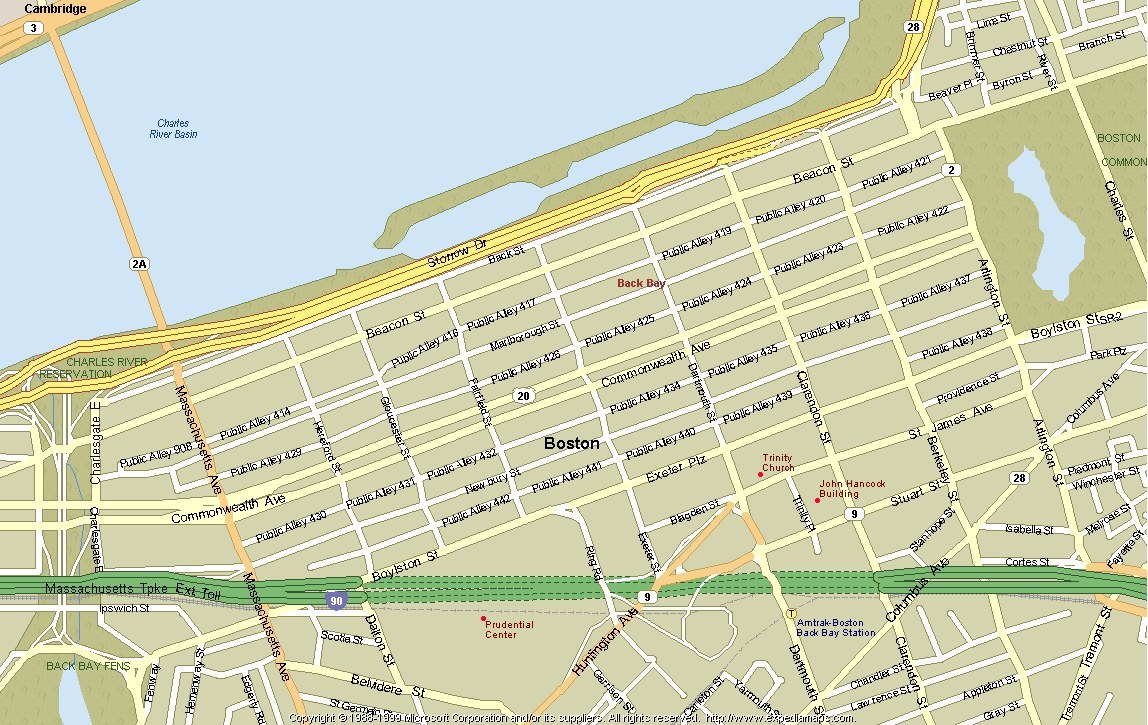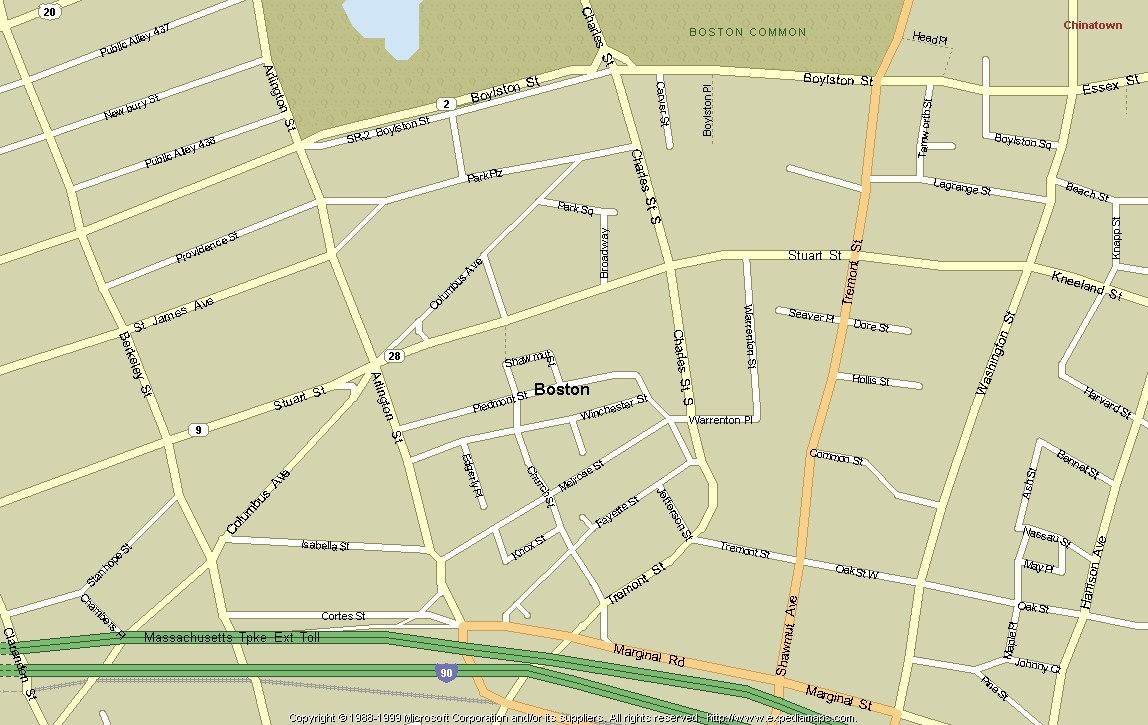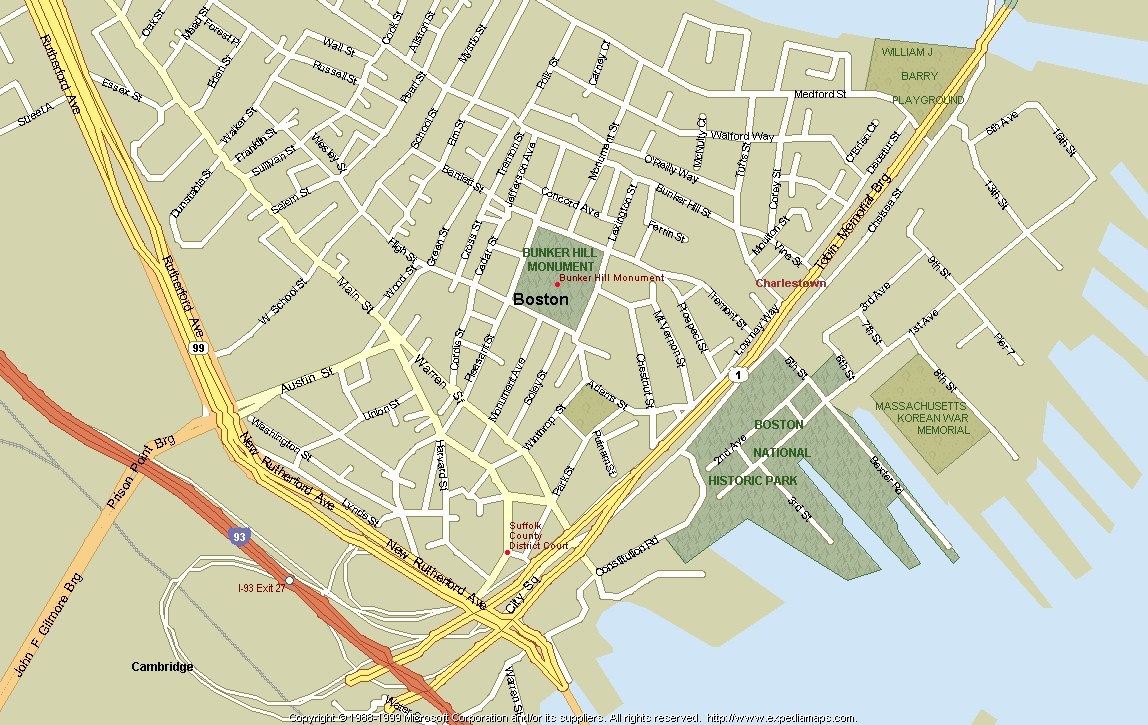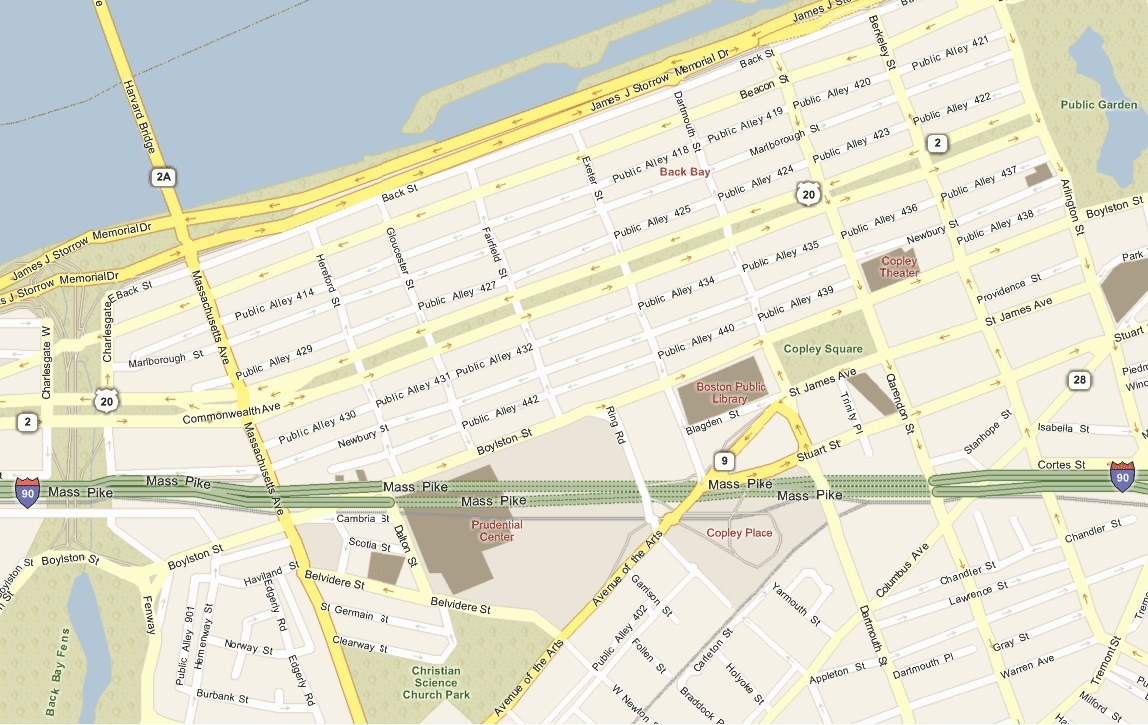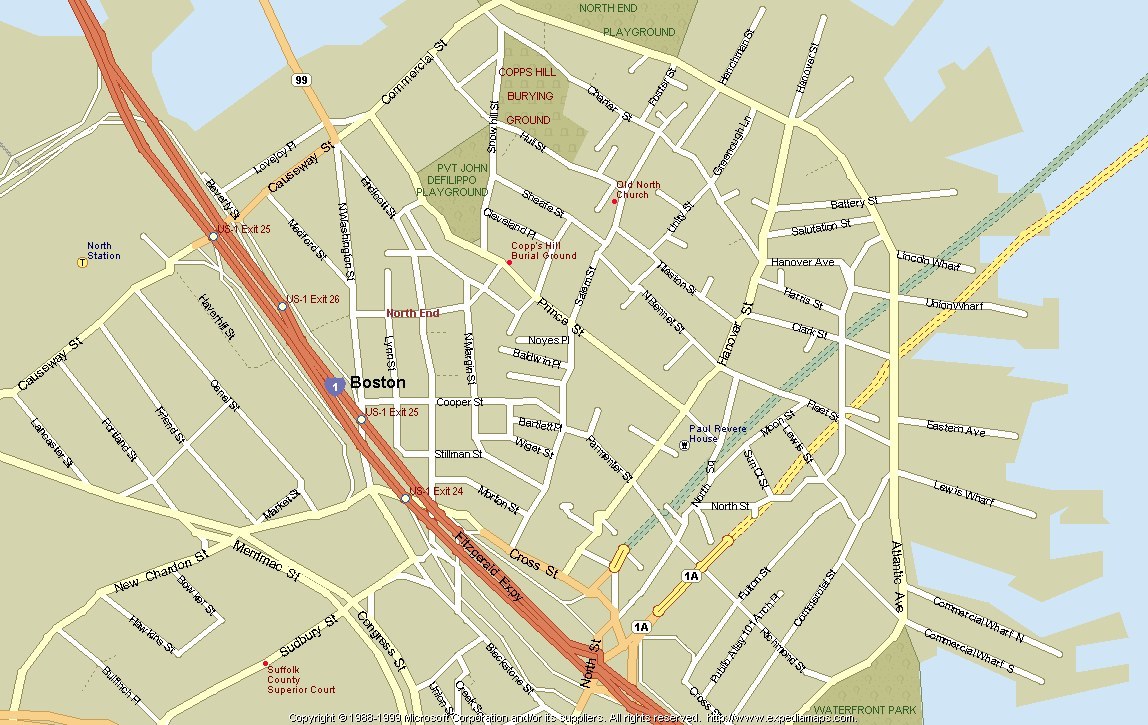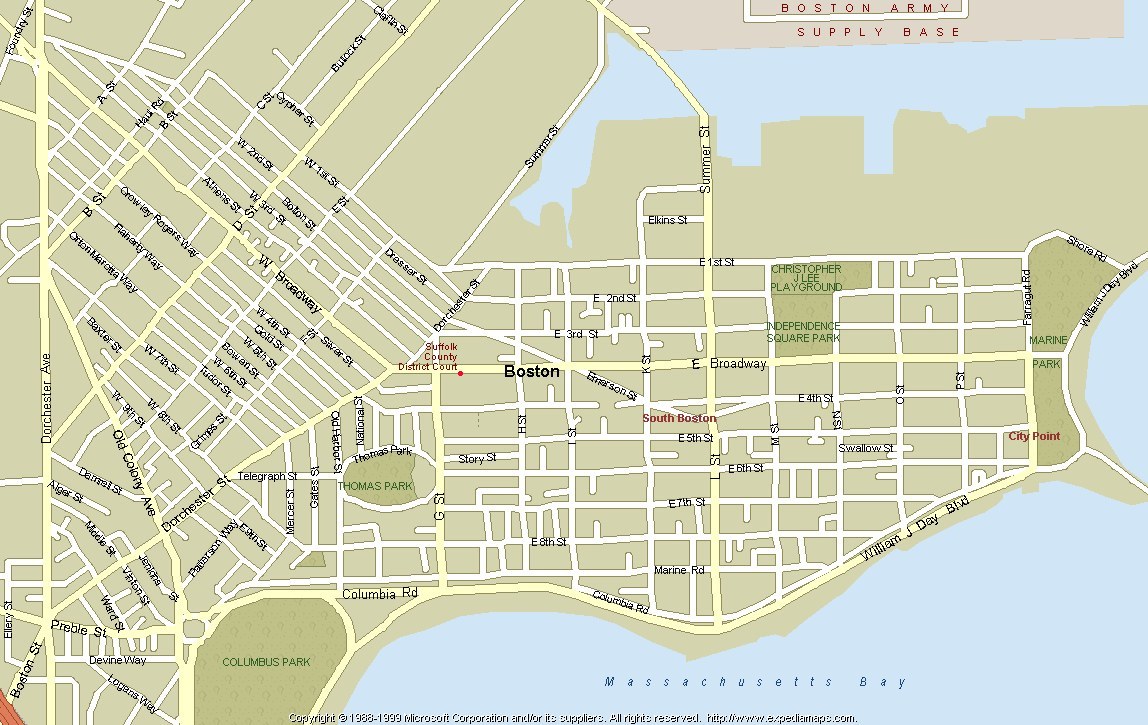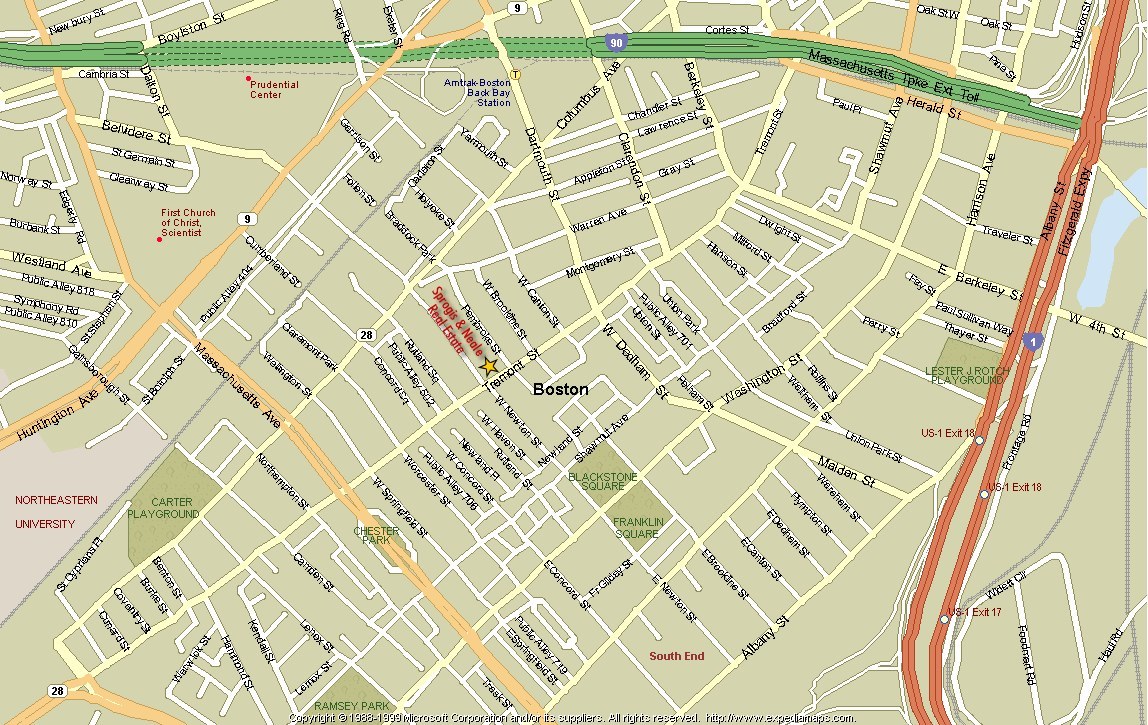Neighborhood Profiles
The Back BayModeled after the boulevards of Paris, the road ways of the Back Bay were created around the time of the Civil War. A portion of the waterfront was filled in with dredged dirt and raw materials from one of Beacon Hill's original three hill's and from nearby Quincy in a 24 hour a day filling operation. Like most downtown neighborhoods, the Back Bay has both residential and commercial uses, with upscale boutique and department stores interspersed with brick and stone townhouses. The Public Garden, Copley Square, Newbury Street and Commonwealth Avenue are the more commonly known features of the area. |
|
Bay VillageA small pocket of residential living on the edge of Boston's Theater District, Bay Village became an isolated oasis of townhouse living after the construction of the Massachusetts Turnpike cut the neighborhood off from the South End. Originally a mudflat of the Charles River, this small neighborhood was greatly affected by the landfill project of the later 1800s and still features the distinctive look of the 19th century Boston. |
|
Beacon HillSeparated from Downtown Boston's commercial district by the oldest park in the United States, Boston Common, Beacon Hill is home to, among other sites, the gold dome of the Massachusetts State House. Many Freedom Trail sites are located here as well as some exquisite Bullfinch architecture and glorious examples of late 19th century architecture. Still a sought-after nearly four centuries of constant use, Beacon Hill is just one example of the living history of Boston. |
|
CharlestownFounded in 1629, a year earlier than the city of Boston, Charlestown was annexed in 1874. Despite the fact that great portions of Charlestown were burned by the British in the aftermath of the great Revolutionary battles of 1775, Charlestown has many excellent examples of 17th and 18th century homes and buildings. For visitors, no tour is complete without viewing the battlefield of Bunker Hill (actually Breed's Hill) and the fashionable homes of Monument Square. Another must-see is the USS Constitution, which fought in the War of 1812 and is the US Navy's oldest, contiguously commissioned warship. |
|
FenwayAlthough commonly thought of as the name of the baseball field, Fenway actually refers to a type of estuarial marsh that is a prominent natural feature of the neighborhood, which is sandwiched between the Charles River and the banks of the Muddy River. Kenmore Square and the internationally famous Medical Area are also part of this neighborhood. |
|
The North End/WaterfrontOne of Boston's oldest neighborhoods, the North End includes much of Boston's new Waterfront development commingled with old tenement-style and row houses that date back to the Colonial era. Although the North End has been home to several waves of immigrants arriving on Boston's shores, since the turn of the century several generations of Italians have made it home. A large portion of the restaurants and cafes attest to this Italian-American heritage, making the North End a delectable neighborhood indeed. Landfill, along the harbor side of the North End, has created a new, modern waterfront where the property is among the city's most desired. The Waterfront has changed greatly over the years, but it is not difficult to imagine a busy seaport filled with schooners and clipper ships when one looks out to sea at the ferries, sight seeing boats, private yachts and sailing vessels that keep Boston Harbor so active. Quincy Market the famed, revitalized warehouse marketplace, is located in this neighborhood. |
|
South BostonOriginally a part of the town of Dorchester, South Boston Neck was annexed to the City of Boston in 1804, and landfill extended its neighborhoods. South Boston was a planned community with specific grid design that is atypical of Boston general. South Boston is also atypical in the sense that it was zoned for commercial, industrial and residential use. By 1855, South Boston had more homes than any other neighborhood. The St. Agustine Chapel is the oldest existing Catholic Church and Burying Ground in Massachusetts. South Boston has some impressive examples of industrial and residential architecture and a beautiful shoreline featuring the world-famous L street Bathhouse. |
|
South EndLike other Downtown neighborhoods, the South End was created by the same landfill project that transformed the Back Bay to a housing district during the Civil War era. South End architecture is typified by brick bow-fronted town houses. During the post-Civil War Depression, these townhouses became rooming houses, serving immigrants from all over the world. Like the West End, the South End was a multiracial, multigenerational neighborhood that was able to stave off devastating urban redevelopment to reemerge as a desirable location for a wide variety of people. |
|
